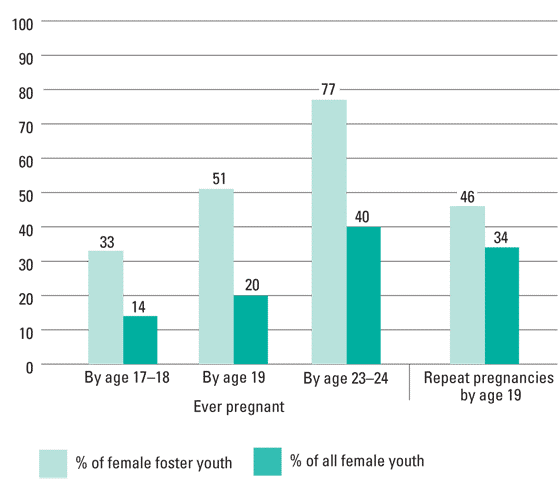By Juliana Oelkers
Marketing Intern
For kids, Valentine’s Day is one of the most exciting days of the year. It’s all about sharing valentines with classmates, eating lots of heart shaped candy, playing games, and celebrating love between family and friends. As children become young adults, Valentine’s Day, relationships, and love become a lot more complicated. Quality sex education and healthy relationship development are so crucial for teens to receive, yet many youth in foster care are not being served on the level they deserve.
Navigating sex is hard for any young adult, but with a lack of social support and stability at home, teens in foster care are at even more of a disadvantage than their peers. Many in the child welfare system are not receiving consistent sex education due to constant new placements. Fifty three percent of foster youth were unaware that condom use can decrease their risk of getting HIV/AIDS and other STIs. Only three percent reported using a condom during sex in the last three months. This is why teens in foster care report higher rates of unintended pregnancy, STD’s, and risky sexual behavior than their peers, all of which can lead to a decline in academic success as well.
There is also an undeniable link between sexual abuse and the youth in the foster care system. Could this be because youth in foster care cannot access information about sex, consent, and healthy relationships? Regardless of a child’s living situation, often no amount of education can prevent sexual abuse, but hopefully being educated on appropriate relationship behaviors can help empower young teens to know when their relationships are abusive and toxic. Getting this information is so crucial in order for them to recognize unacceptable and abnormal sexual behaviors from partners or anyone else in their lives so they can speak to caring adults in their lives to ask for help.
Information about LBGTQ+ relationships is also barely included, if at all, in many sex education curriculums. LGBTQ+ youth are over represented in foster care, making this another gap in the child welfare system that puts foster youth at a disadvantage. If and when teens in foster care finally do receive sex education, it is ineffective if that education is not LGBTQ+ inclusive because so many of them (5-10%) are members of that community.
Thrive New Jersey, a coalition of health agencies and advocacy groups in the state, recently graded the state with a “C” in its 2019 report card detailing how sexual health and sexuality are taught in schools to all children across our state.
Our CASAs provide support, resources, and referrals that teens often desperately need. A few credible sources of information include:
Society for Adolescent Health and Medicine: This organization has already compiled a comprehensive list of resources on anything you can think of. It includes informational resources, ‘Ask Alice’ blogs, useful apps, and helplines.
GLSEN (Gay, Lesbian, and Straight Education Network): This is a great starting off point to get reliable information for LGBTQ+ teens
Advocates for Youth: This organization offers free online lesson plans in English and Spanish that cover all the national sexual education requirements and are available for all age ranges.
Sexetc.org: is one of the most popular and comprehensive sex ed resources by teens for teens in the U.S. providing accurate and relevant stories and blog posts.
Lack of sexual education leads to unhealthy relationships, decreased academic performance, and health risks. When teens in foster care have access to this type of education, there is one less obstacle in the way of achieving stability and normalcy in their lives.
(Information gathered from Public Health Post and Healthychildren.org)







